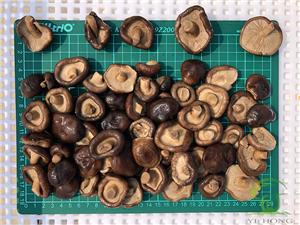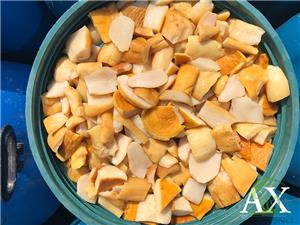China’s Brine Mushroom Exports to Southeast Asia Continue Upward Trajectory
China’s export of brine-preserved mushrooms to Southeast Asia has demonstrated a steady and robust increase in recent years. According to CEIC data from the General Administration of Customs, exports under HS code “Other Mushrooms and Truffles in brine” reached RMB 26.51 million in October 2024, the highest point on record, before moderating to RMB 14.89 million in November 2024. From January 2015 through November 2024, monthly figures averaged RMB 9.34 million, indicating a growing export profile in this category.
Trade Volume and Destinations:
UN Comtrade-based research highlights that China’s salt-water mushrooms have remained a significant export product to ASEAN markets since 2002. Within this grouping, Vietnam, Thailand, and Malaysia account for the majority of imports. Volza global shipment data report that from November 2023 to October 2024, China accounted for around 24% of global mushroom exports and maintained strong volume across Asian markets . Among ASEAN members, import value for preserved Agaricus mushrooms amounted to USD 1.52 million in 2022, with China providing approximately 99% of the supply.

Market Drivers:
The brine mushroom market in Southeast Asia is primarily driven by rising consumer demand for preserved, umami-enhanced ingredients. IMARC Group projects a Southeast Asia mushroom market CAGR of 6.67% between 2025–2033, as regional consumers increasingly embrace plant-based proteins and convenient packaged foods. China’s brine-preserved shiitake mushrooms, in particular, feature heavily in popular local cuisines—such as Vietnamese pho, Malaysian soups, and Thai stir-fries—due to their savory depth and long shelf life.
Growth Factors and Trade Advantages:
Key to China’s leadership in this sector is the RCEP agreement, which has reduced trade barriers and simplified customs procedures for member countries within ASEAN. China’s production of edible mushrooms exceeds 40 million metric tons per year—representing over 75% of global output—with total mushroom industry revenue surpassing USD 42 billion. Dried mushrooms remain the most competitive category; however, brine-preserved variants currently hold the second position, offering expansion scope for new market entrants .
Additionally, CEIC records show that exports of brine-preserved Agaricus reached RMB 5.62 million in February 2025, rebounding from a low of RMB 2.33 million in February 2020 during the global COVID downturn.
Price and Quality Trends:
Industry sources report rising unit prices in recent years, reflecting increased demand from quality-driven markets in Japan, South Korea, and Southeast Asia . Zhangzhou city, a major mushroom cultivation hub in Fujian province, has seen both export volume and canned mushroom prices climb consistently since the 1980s . The strengthened traceability, adherence to food safety standards, and packaging innovation—featuring vacuum-sealed, BPA-free jars—enhance product appeal among importers.
Future Outlook:
With Southeast Asia’s GDP growth outpacing global averages and per capita consumption rising, analysts forecast continued expansion of preserved mushroom demand over the next decade. UN Comtrade-based studies suggest China’s salt-water mushroom category retains strong trade competitiveness and persistent growth potential in markets like Malaysia, Thailand, and Vietnam.
- Company News
- Industry News
- Product News
- Video




